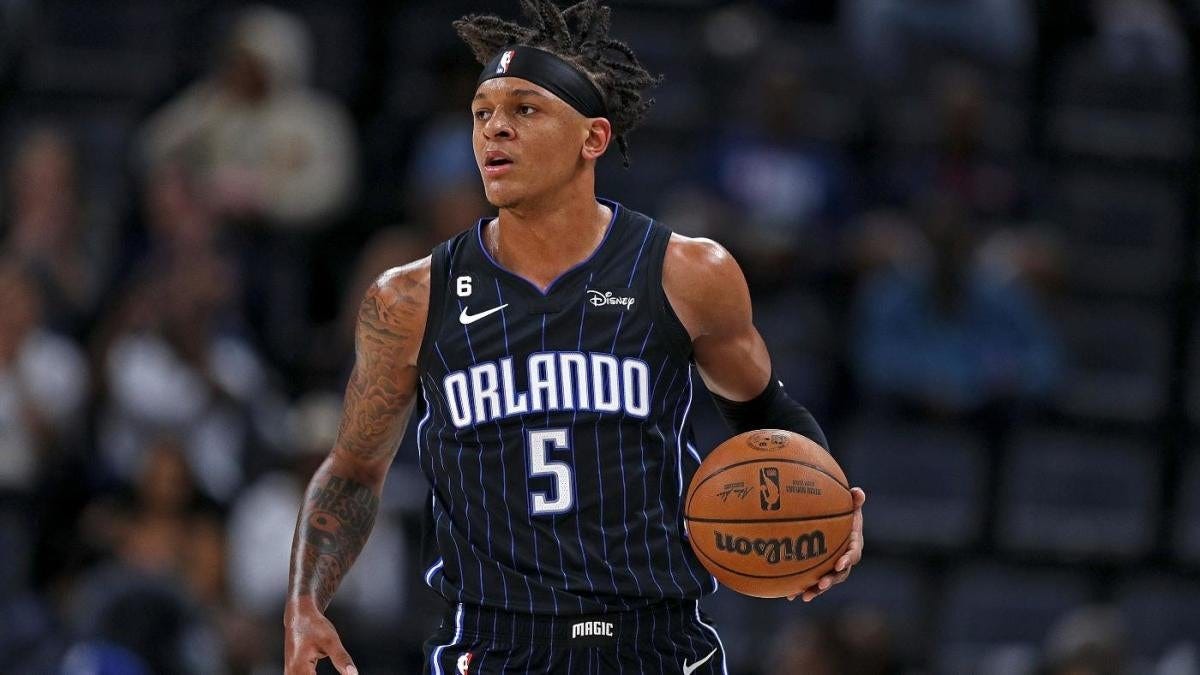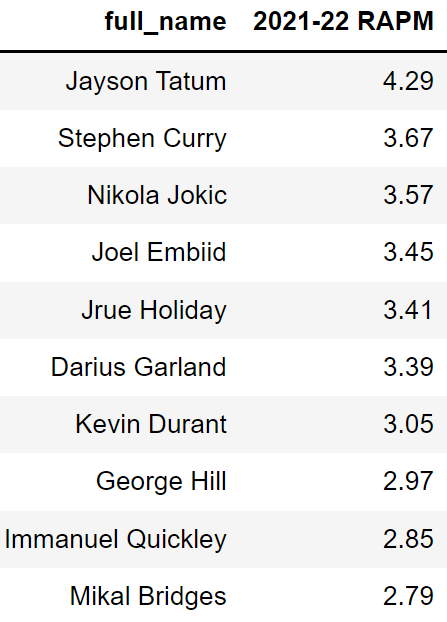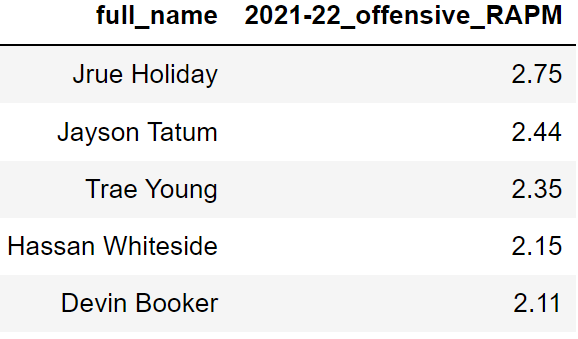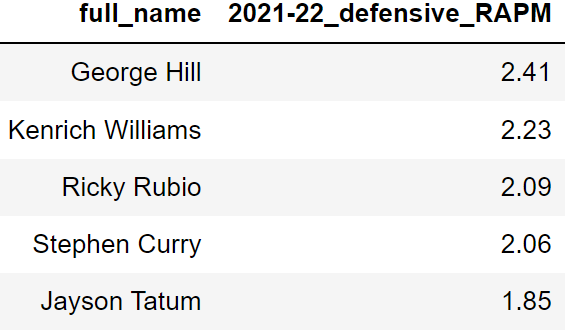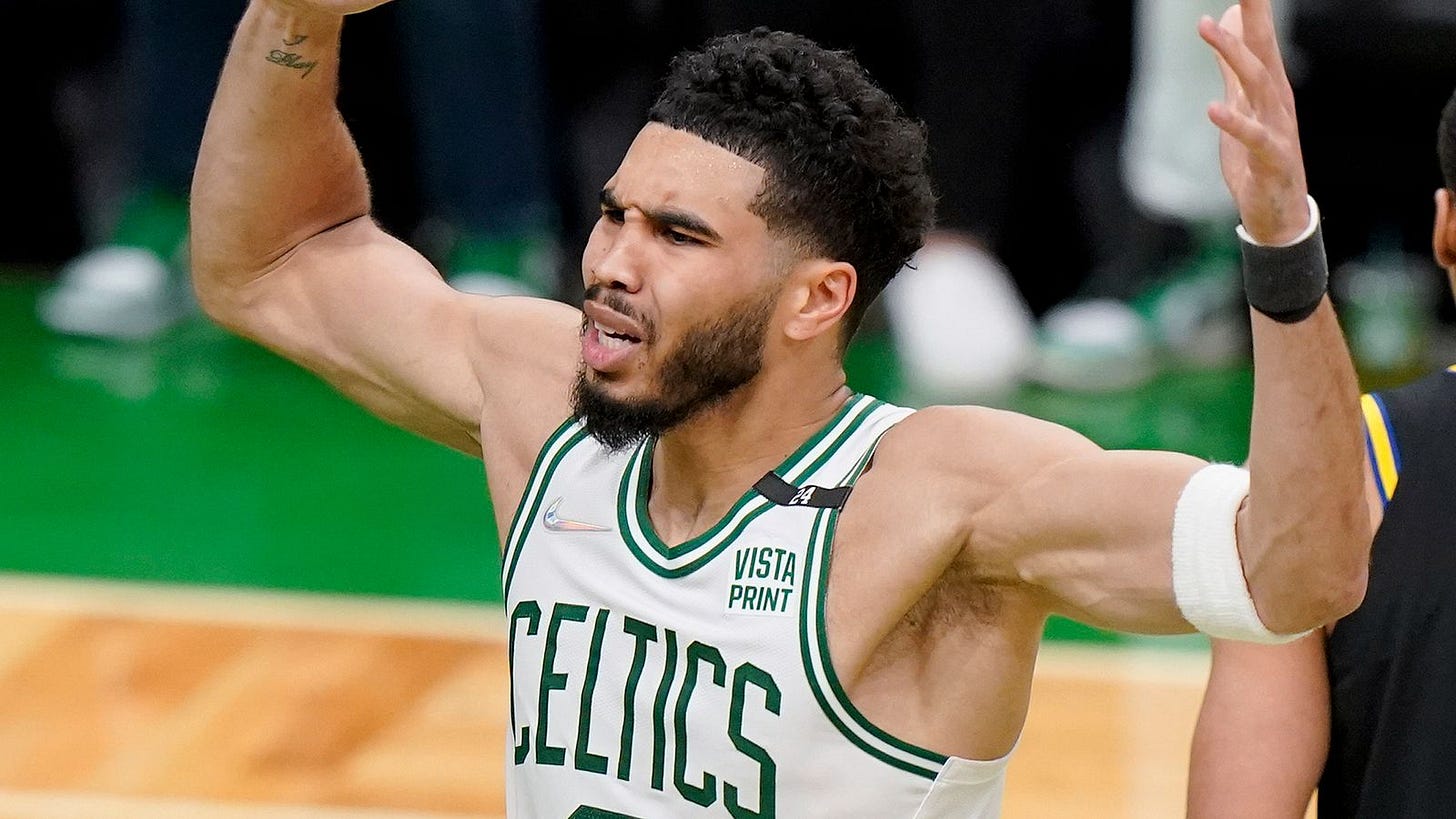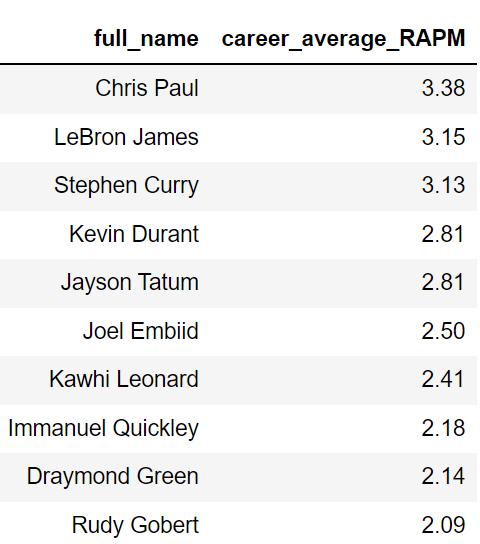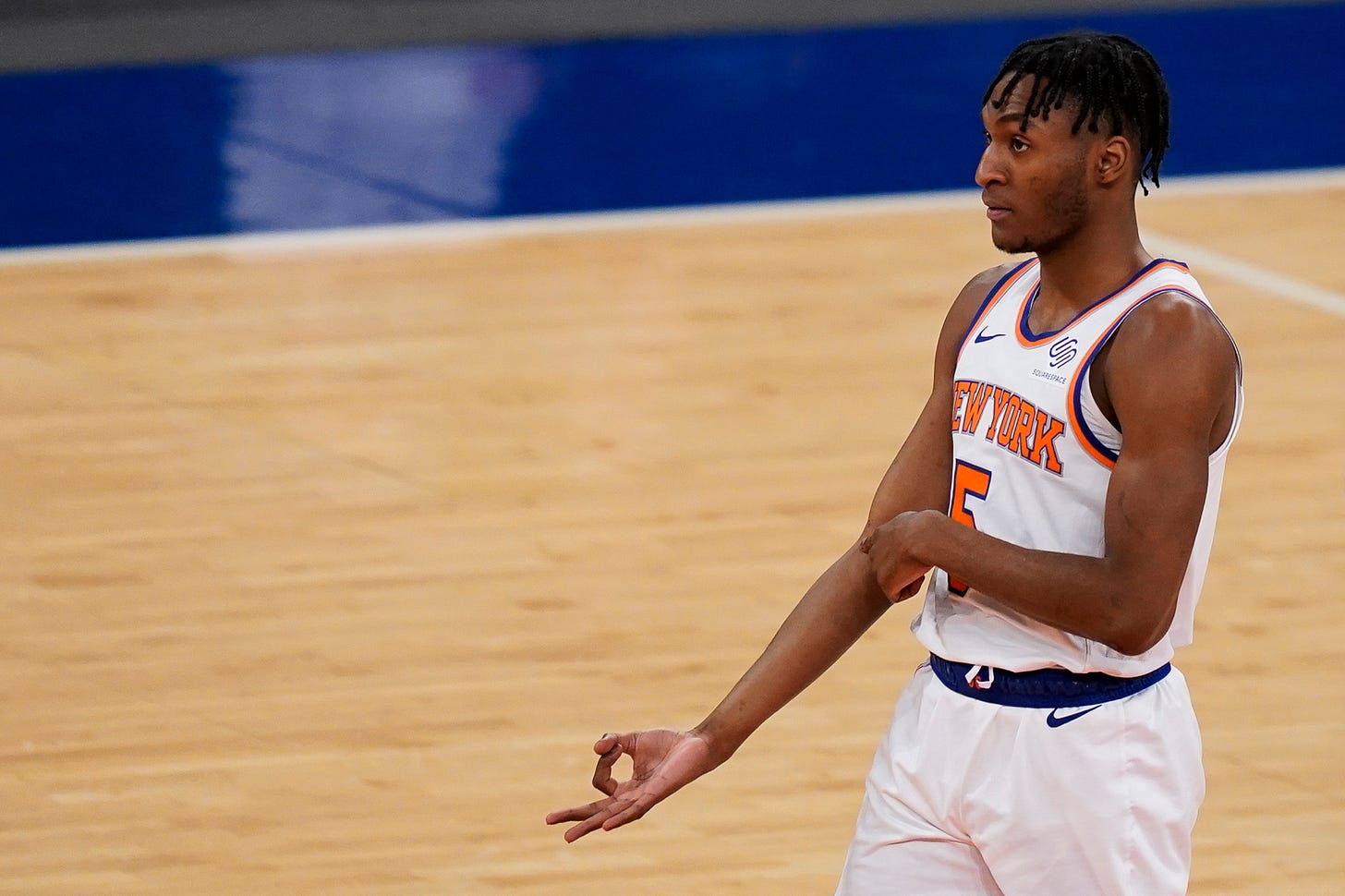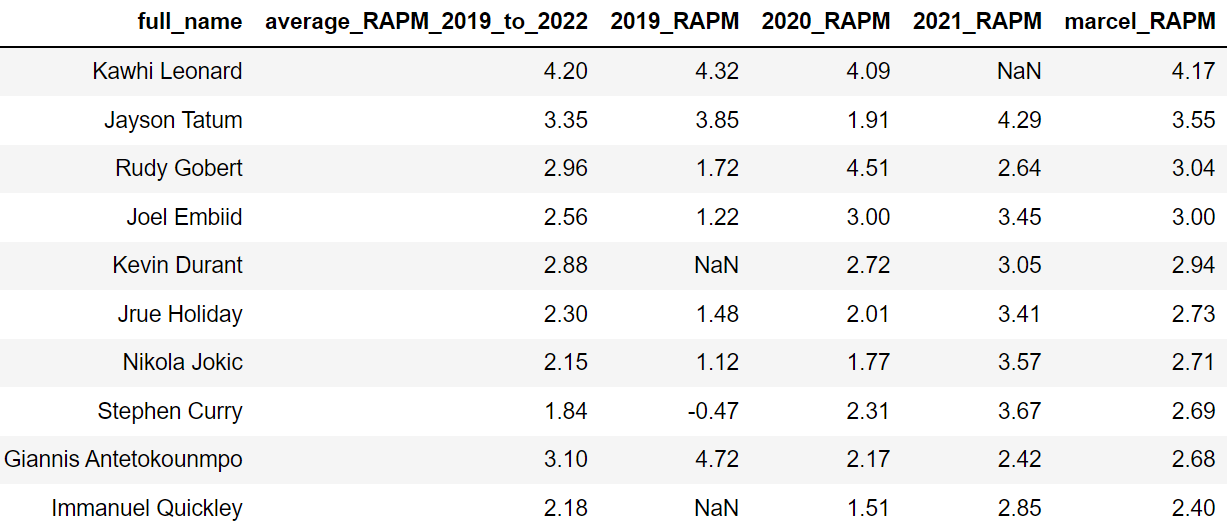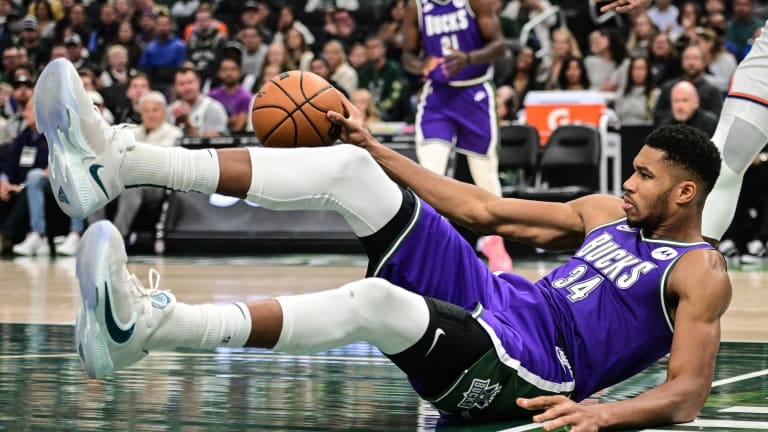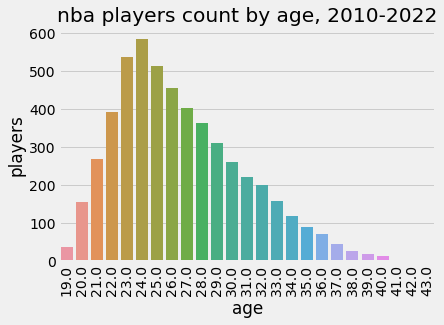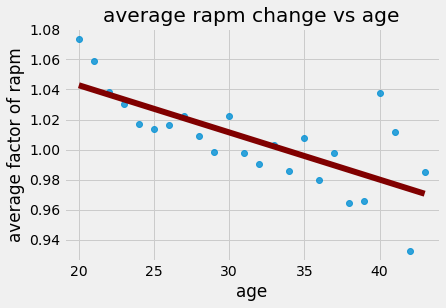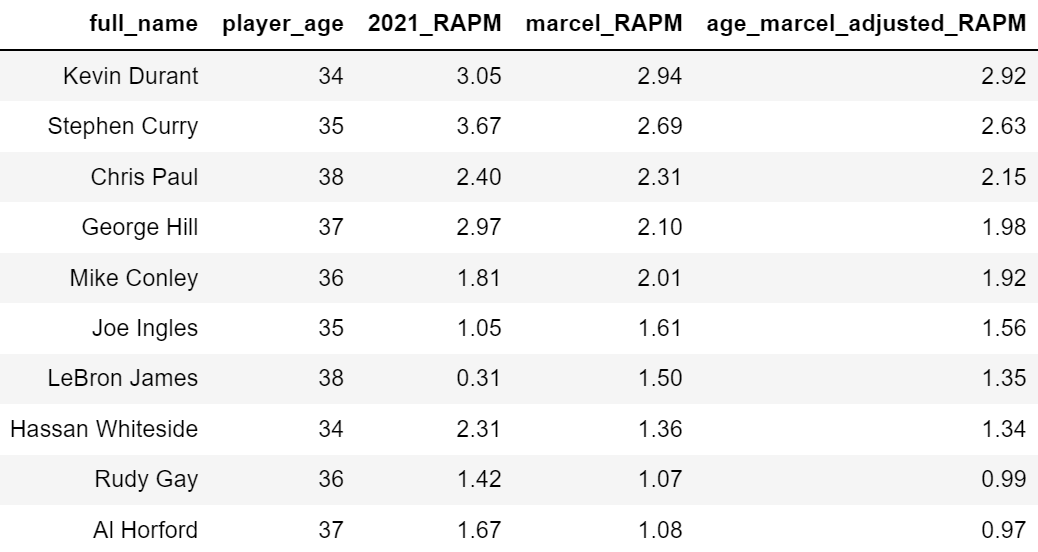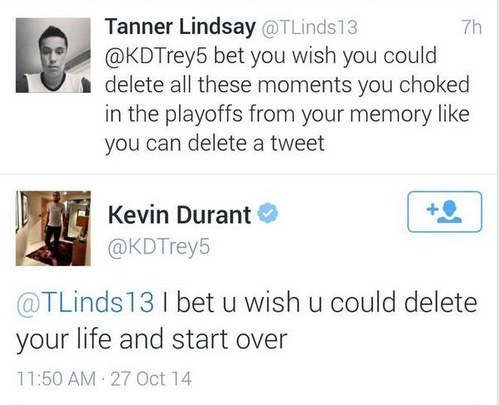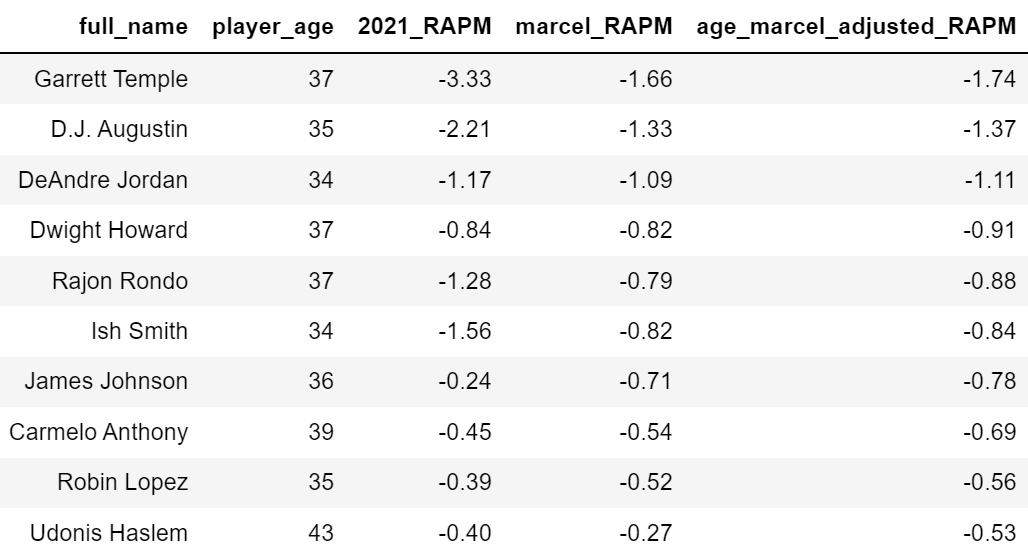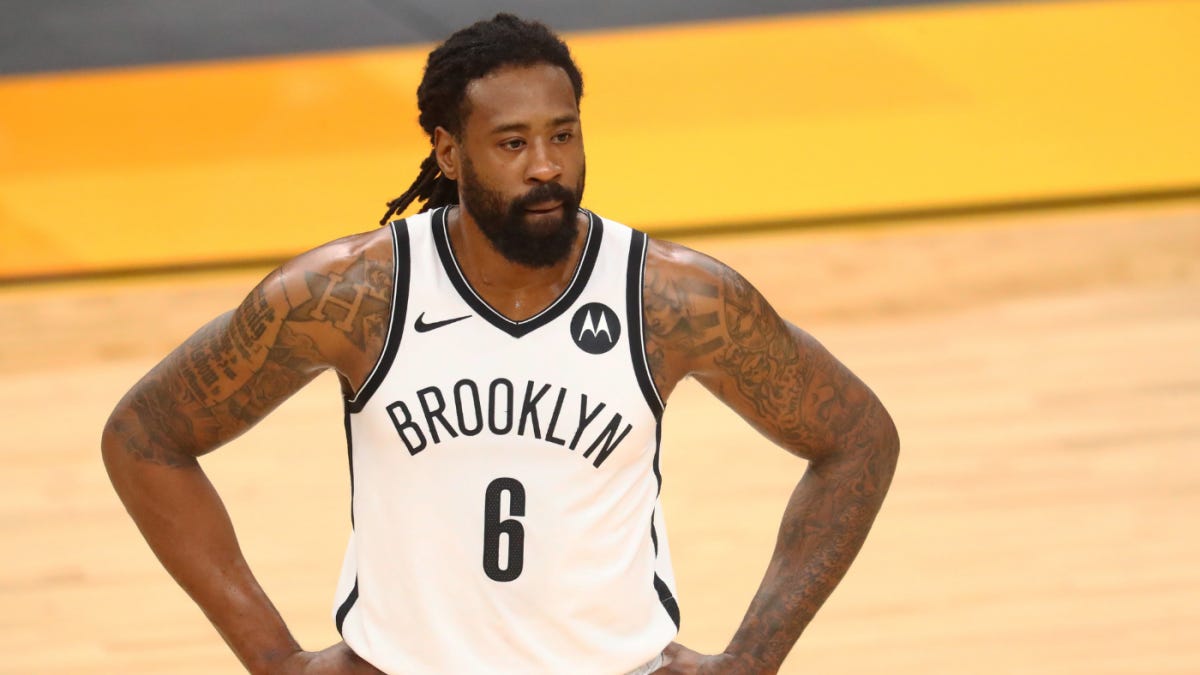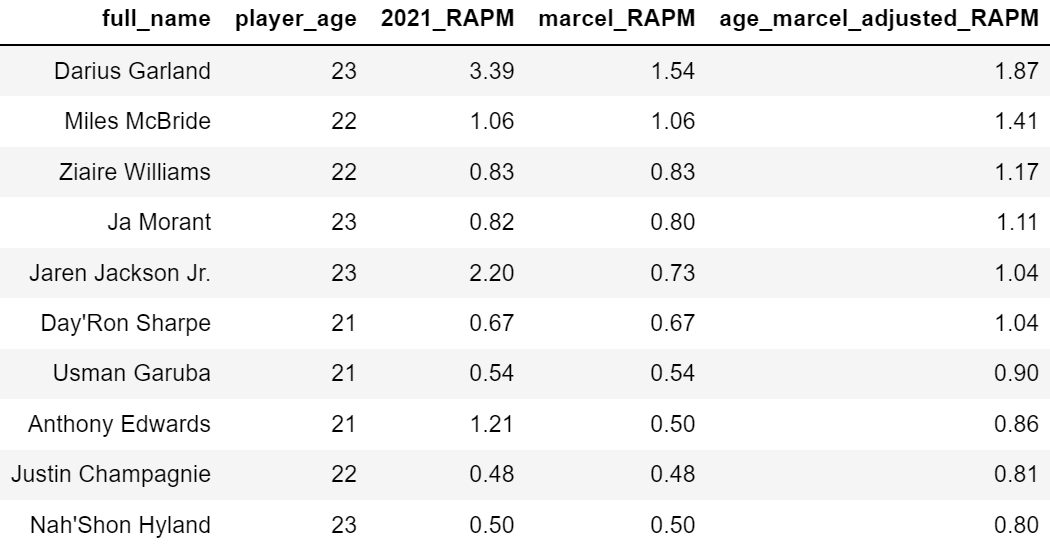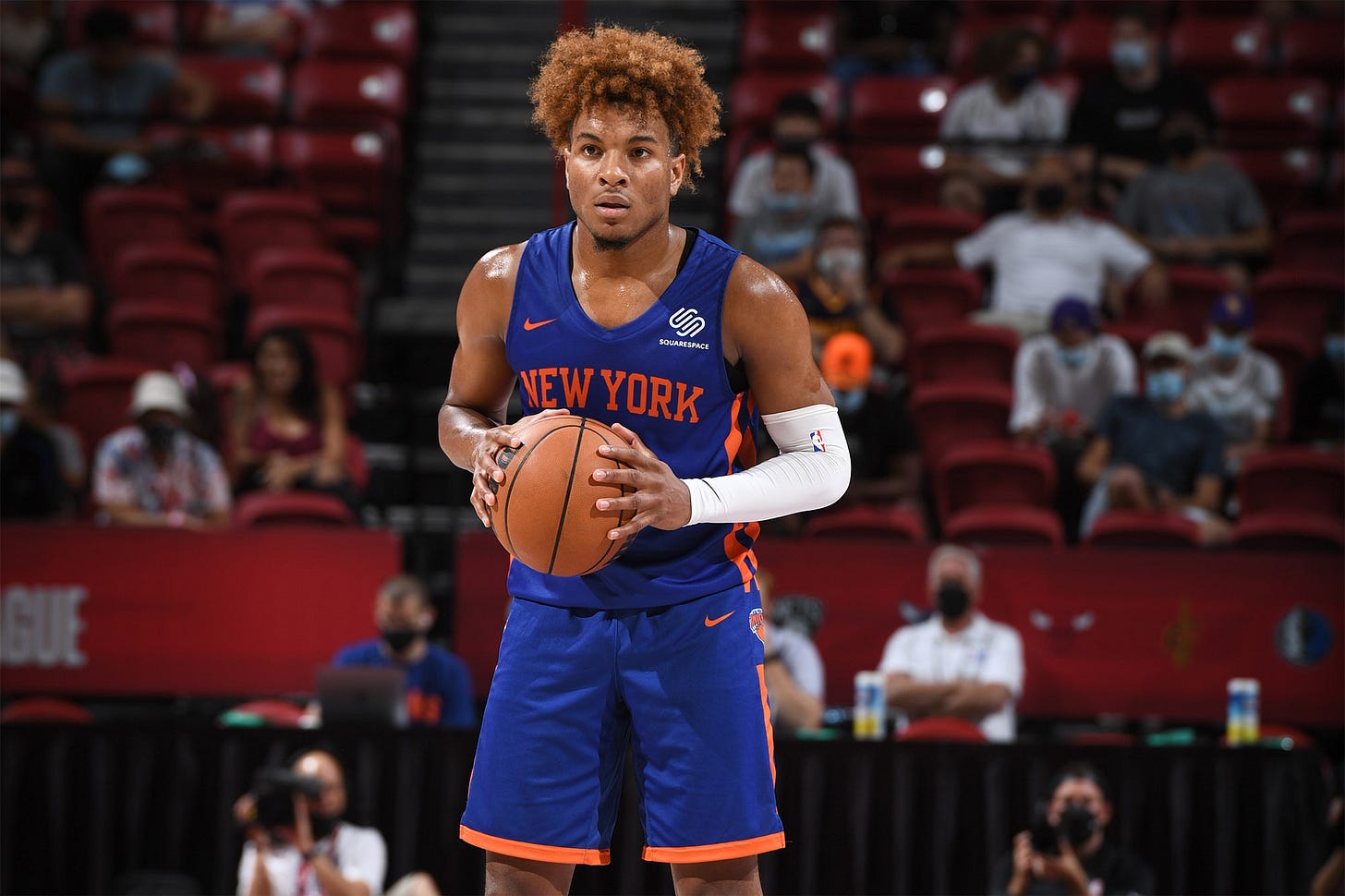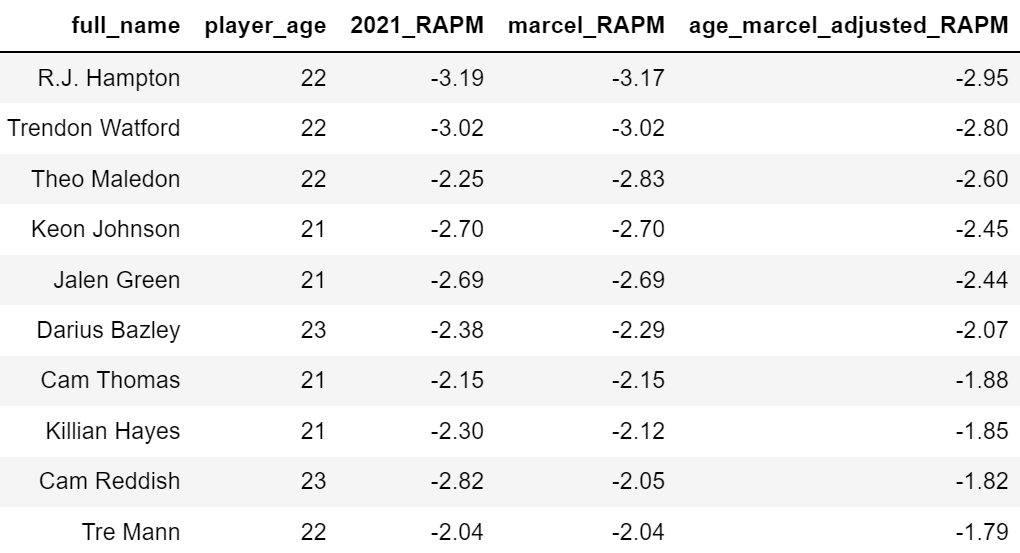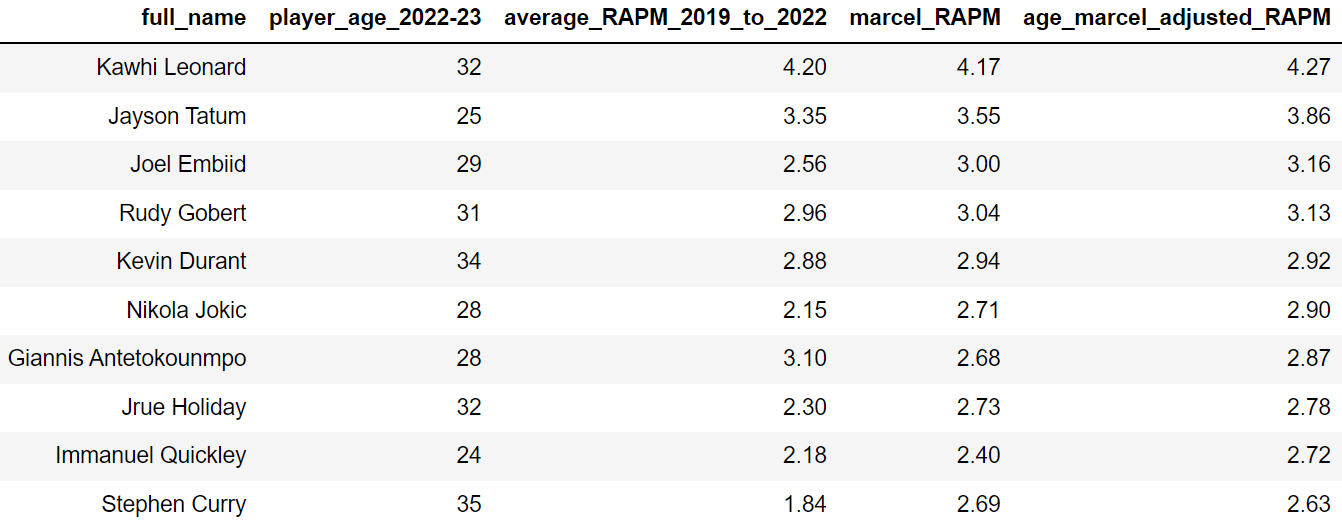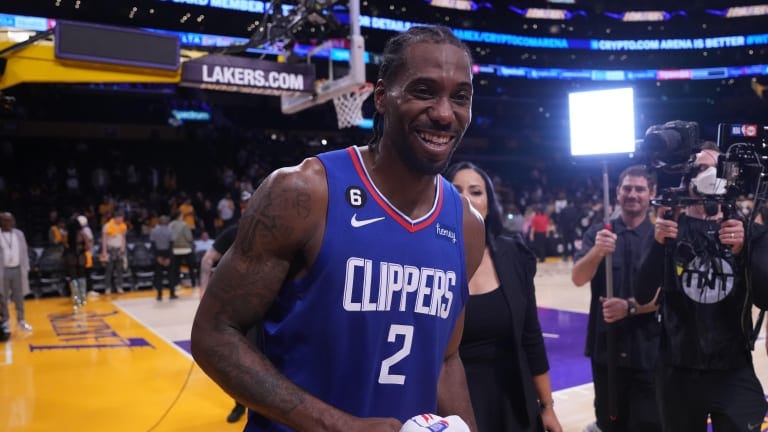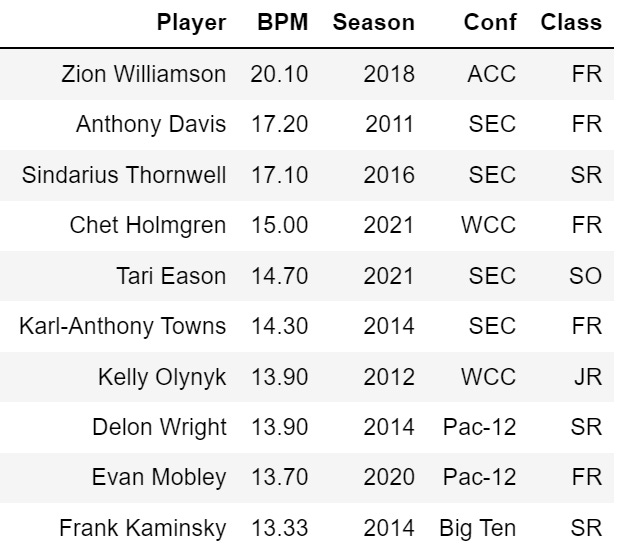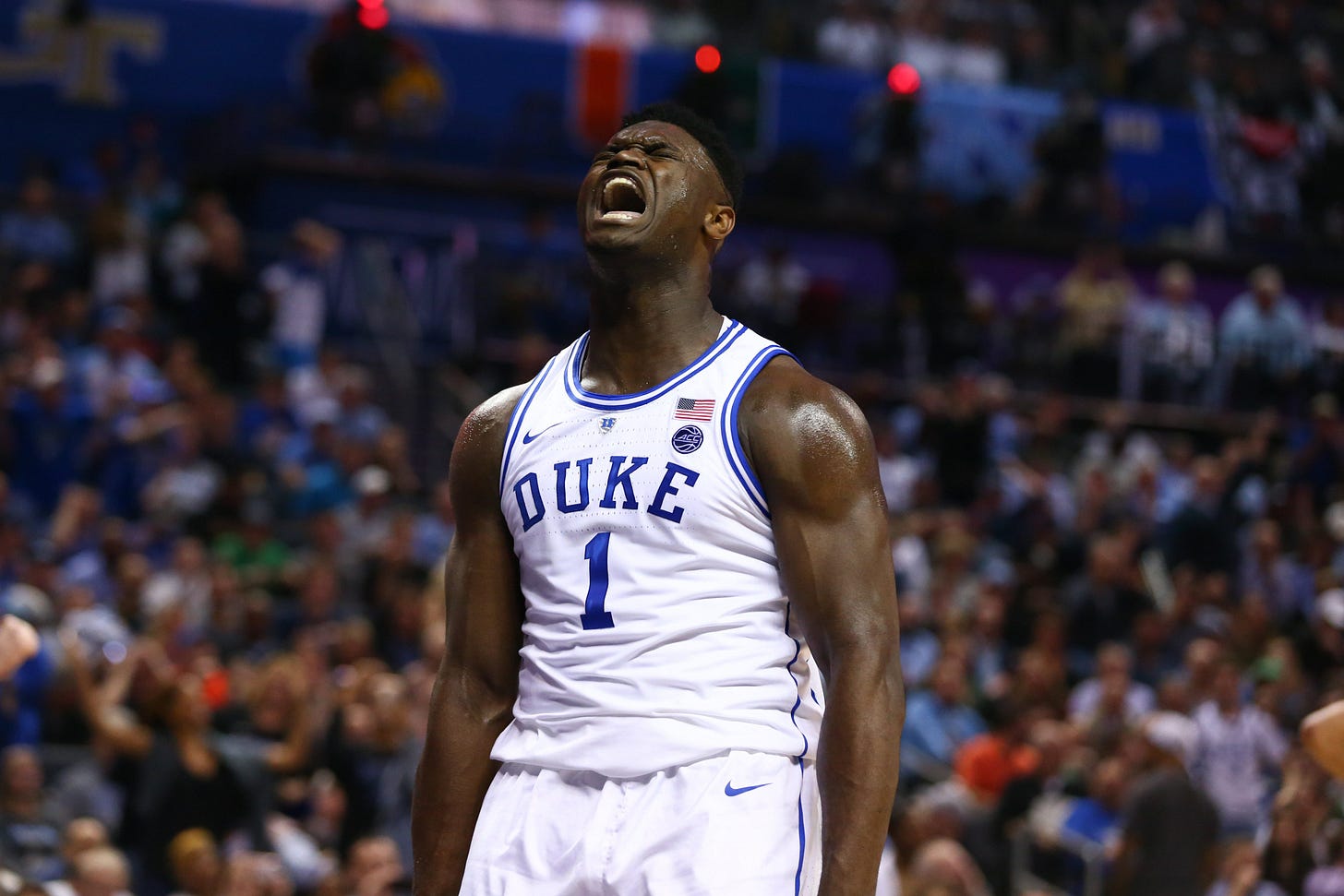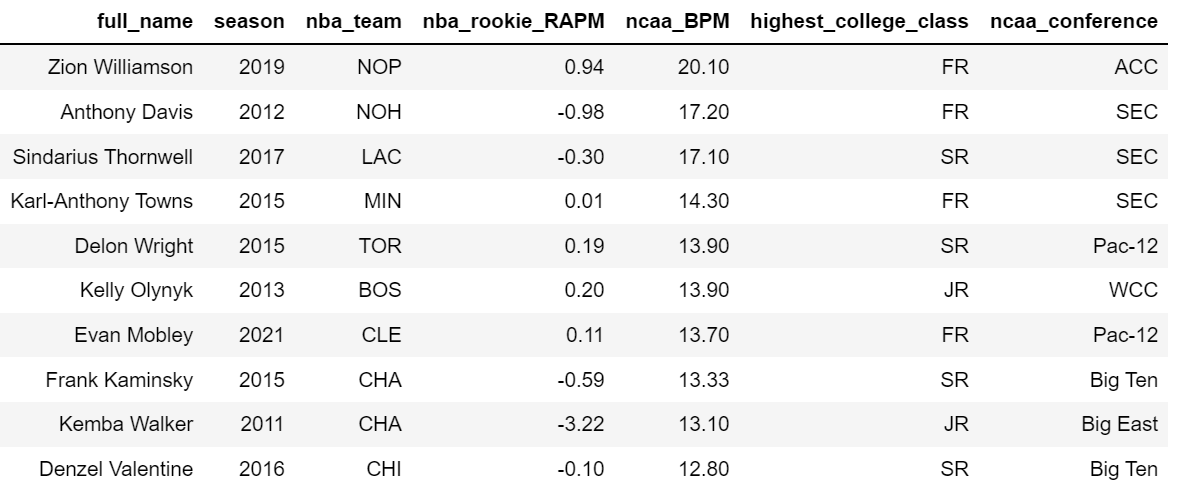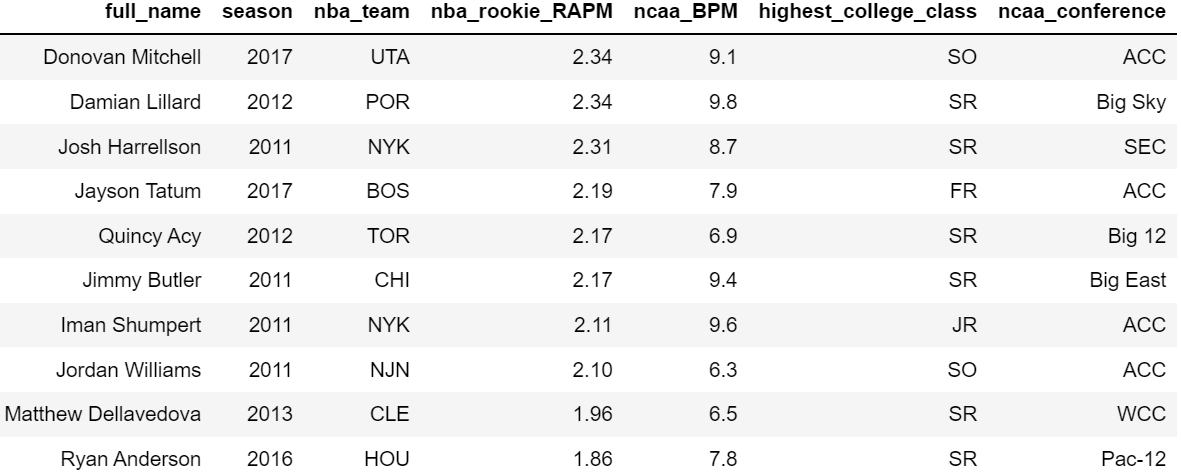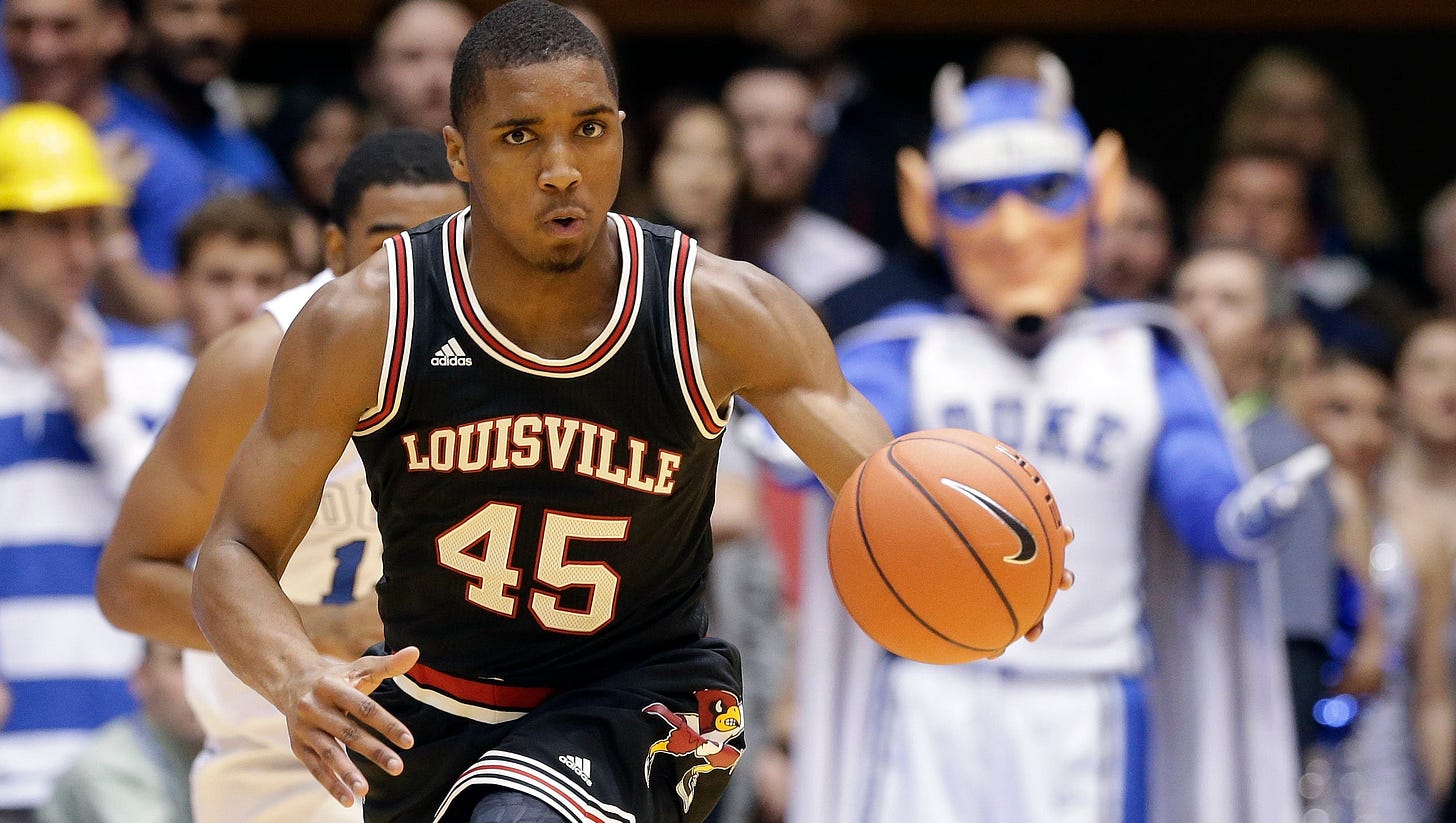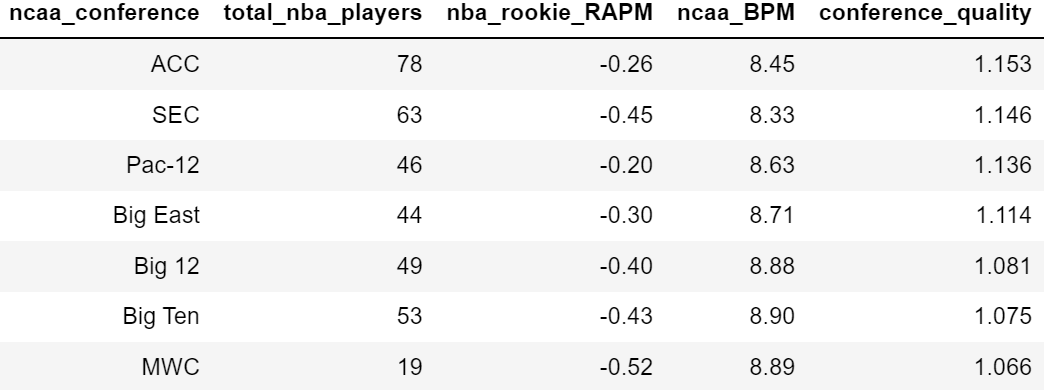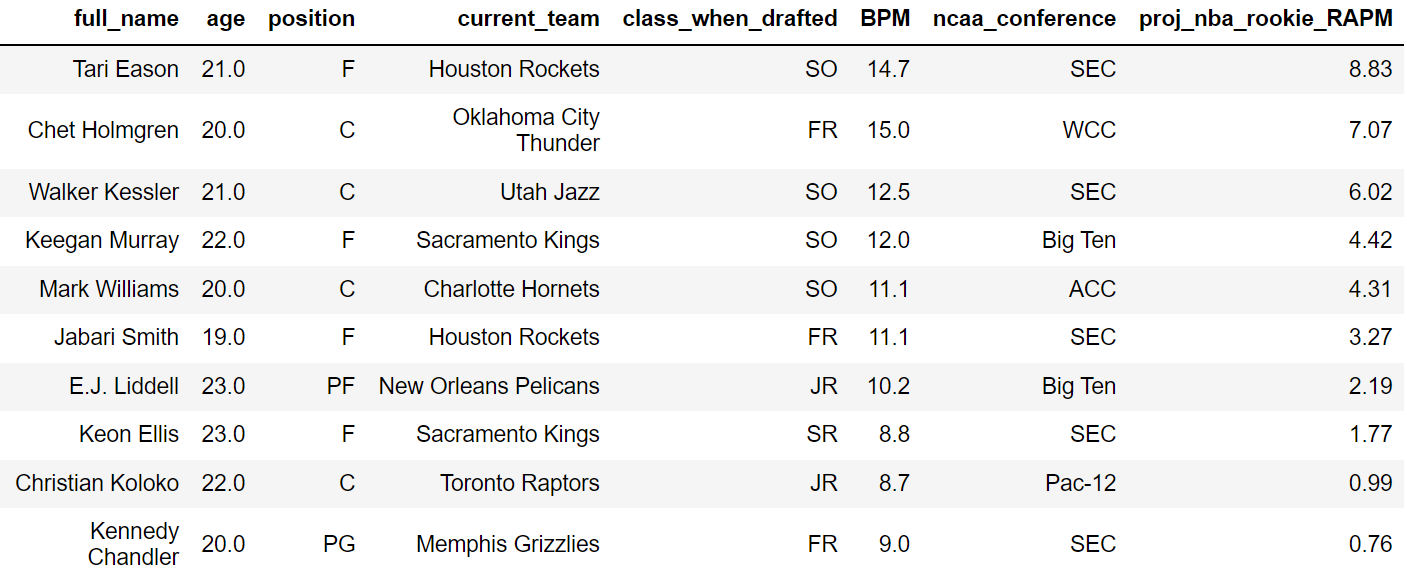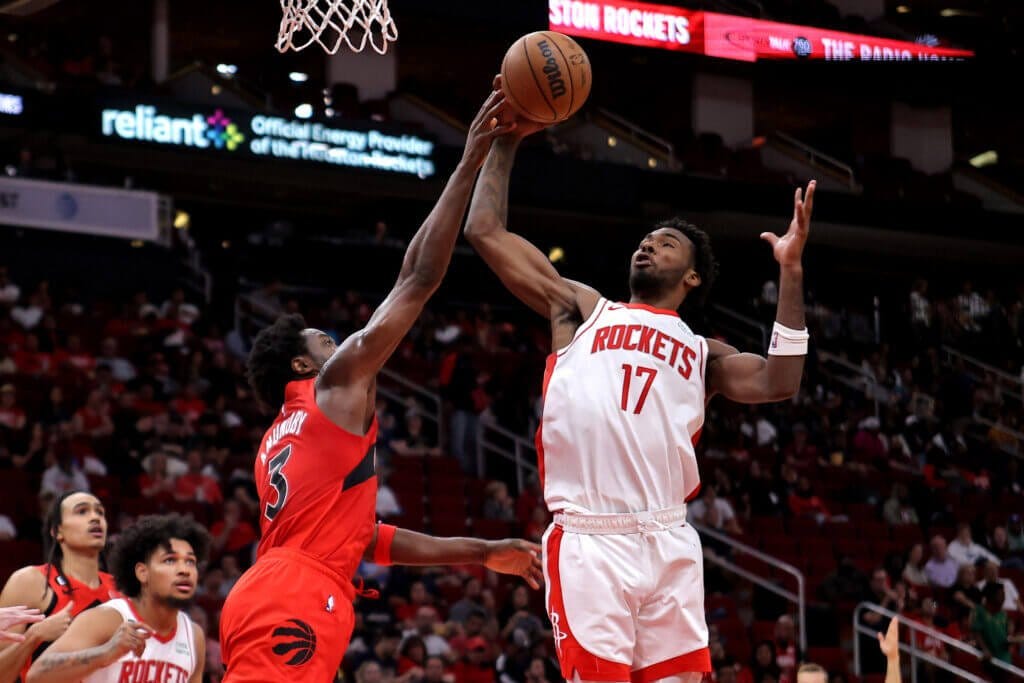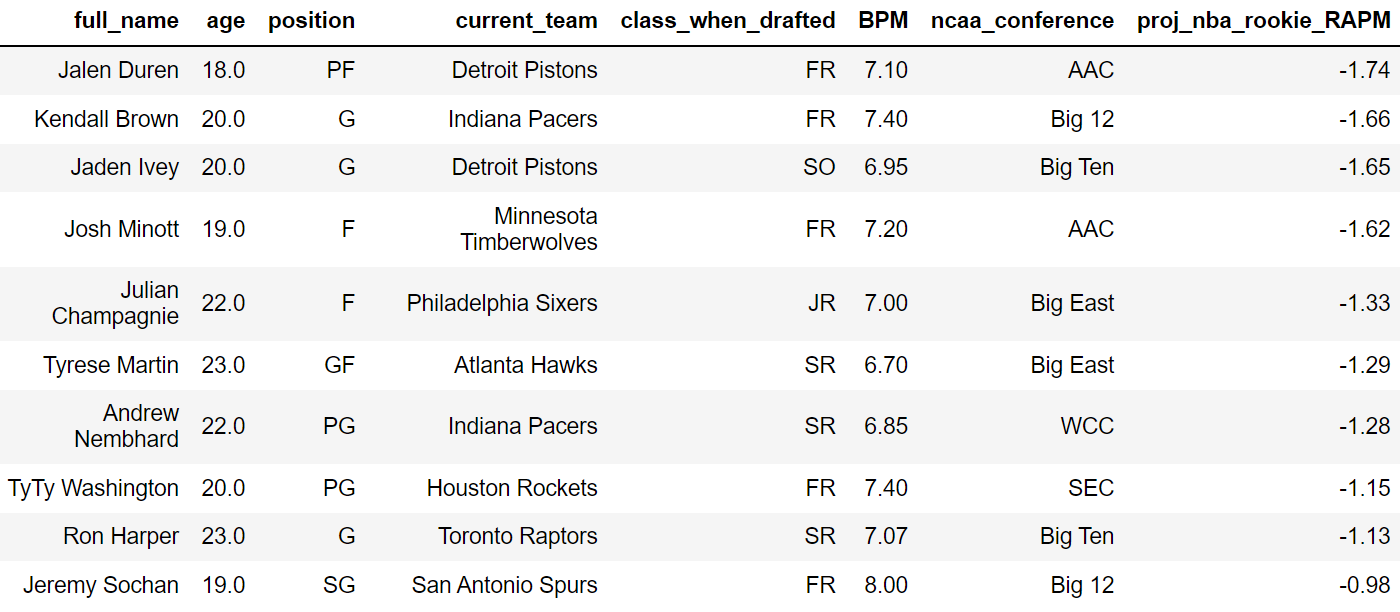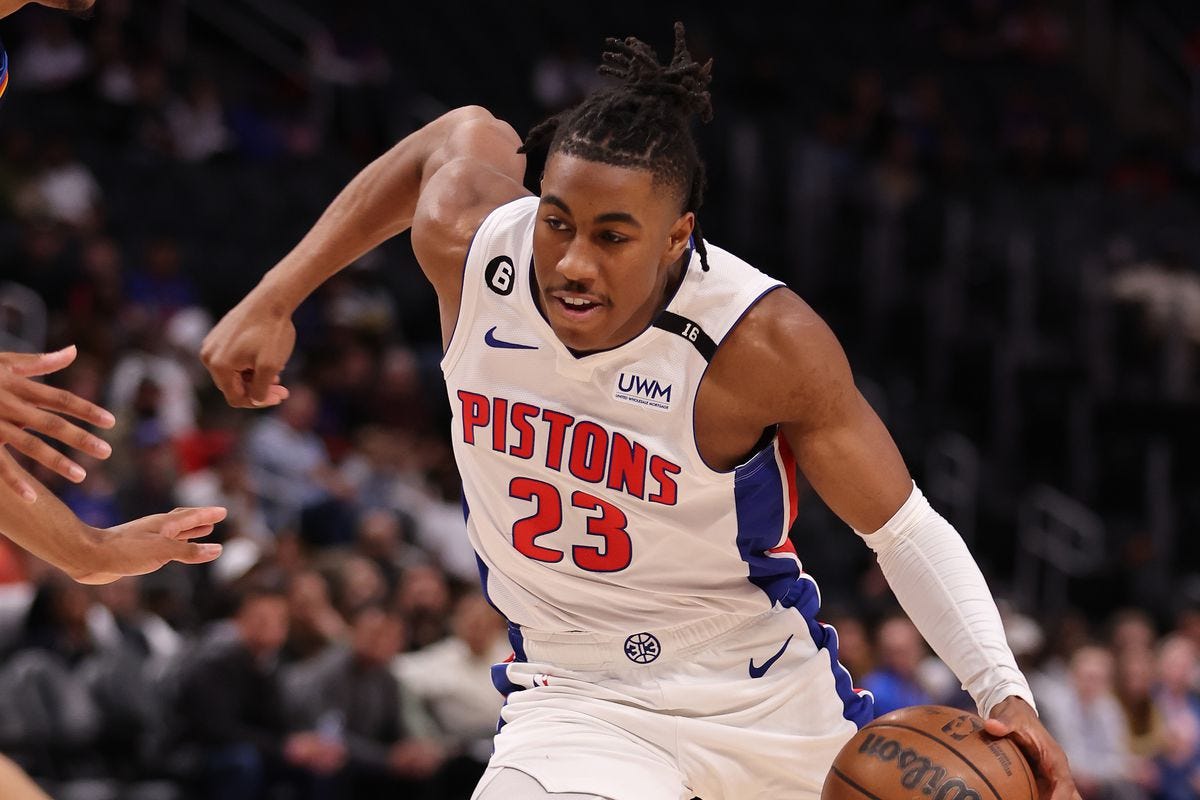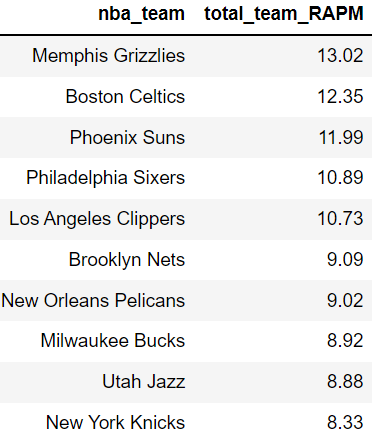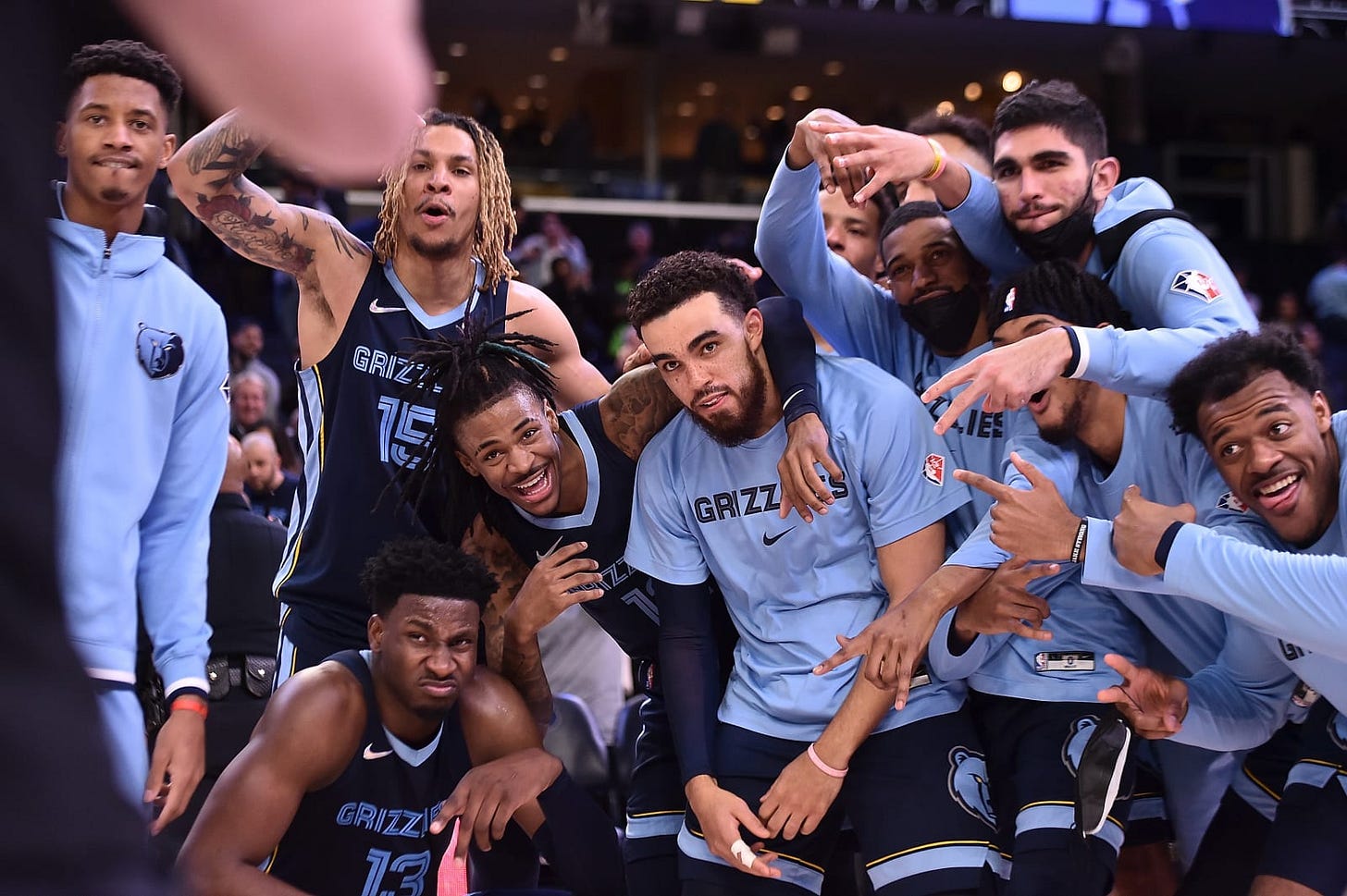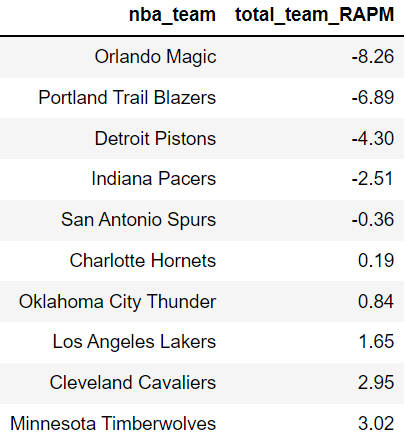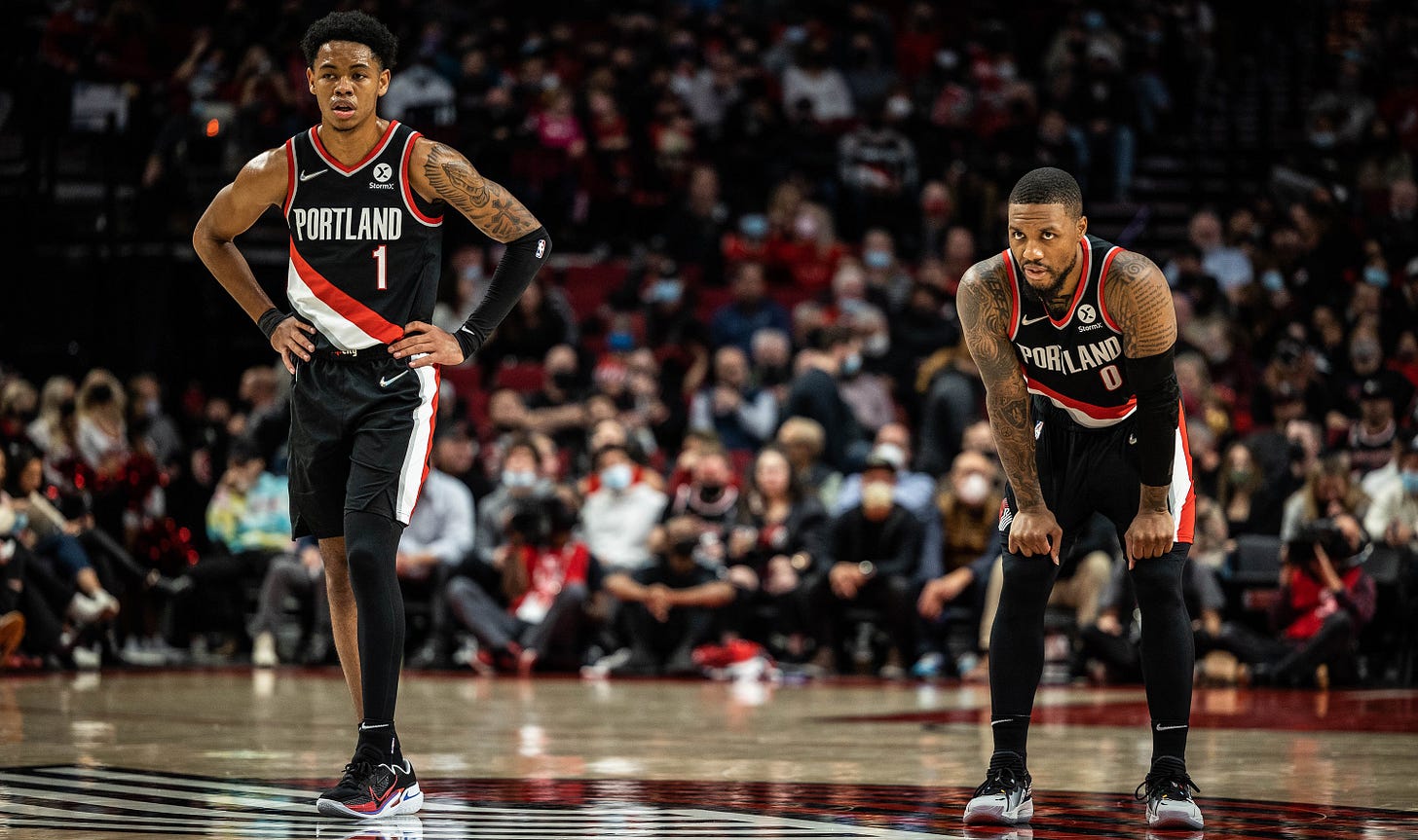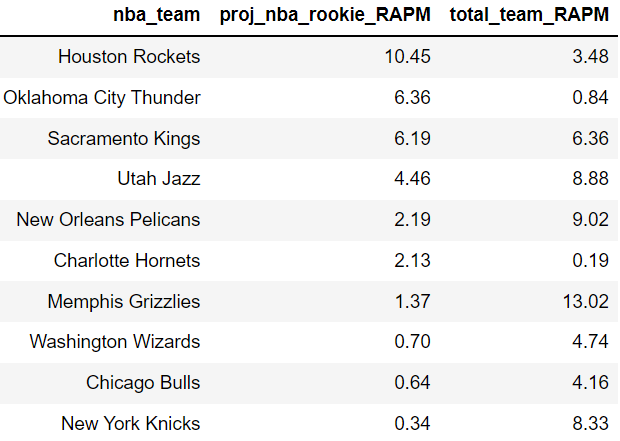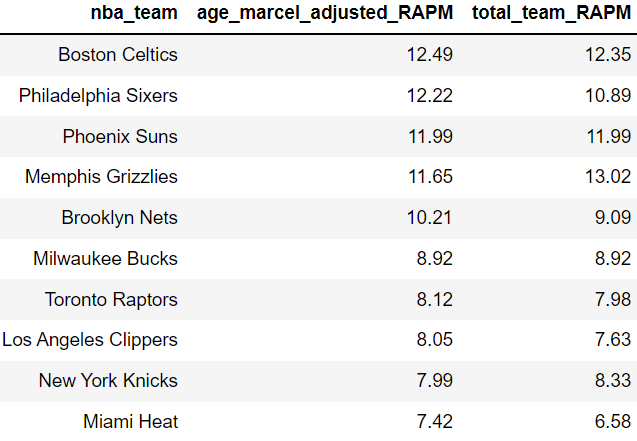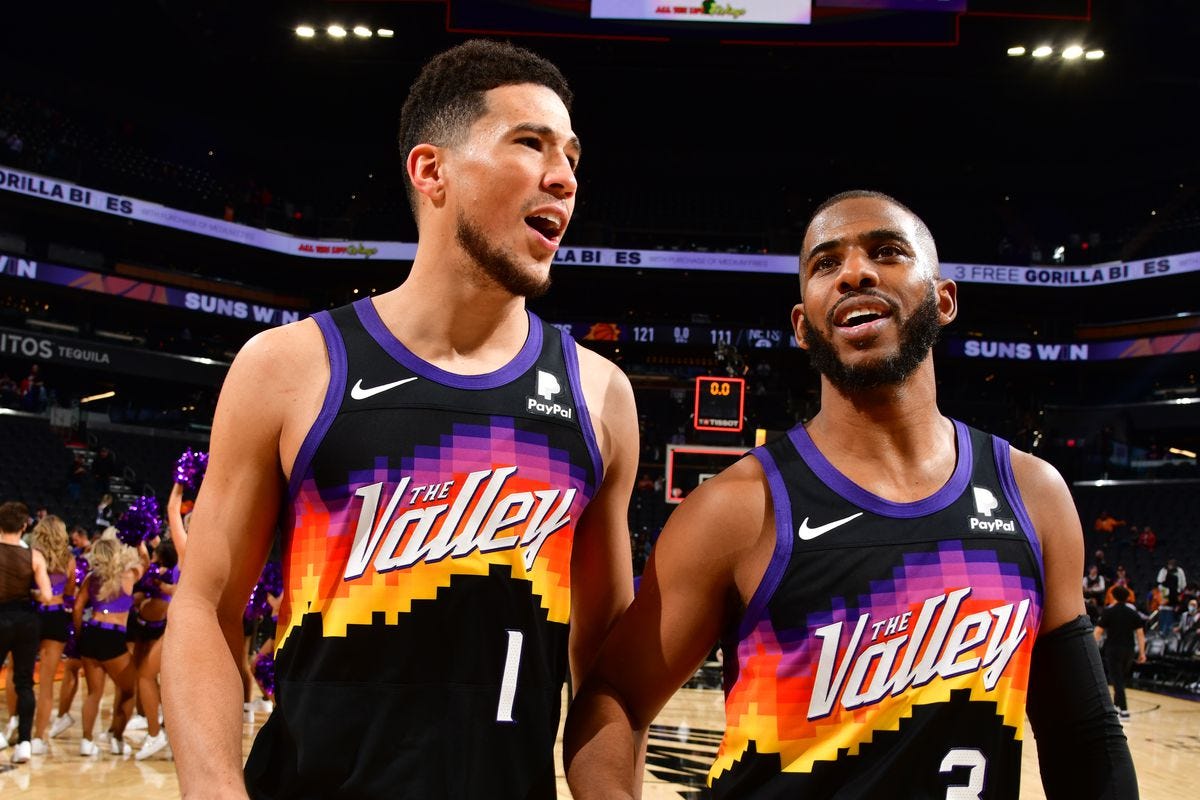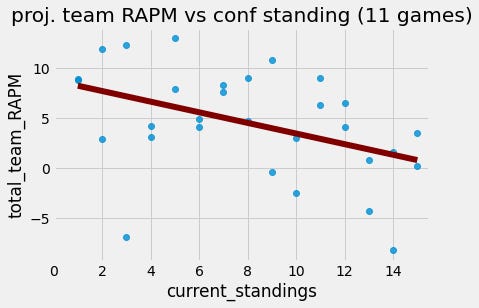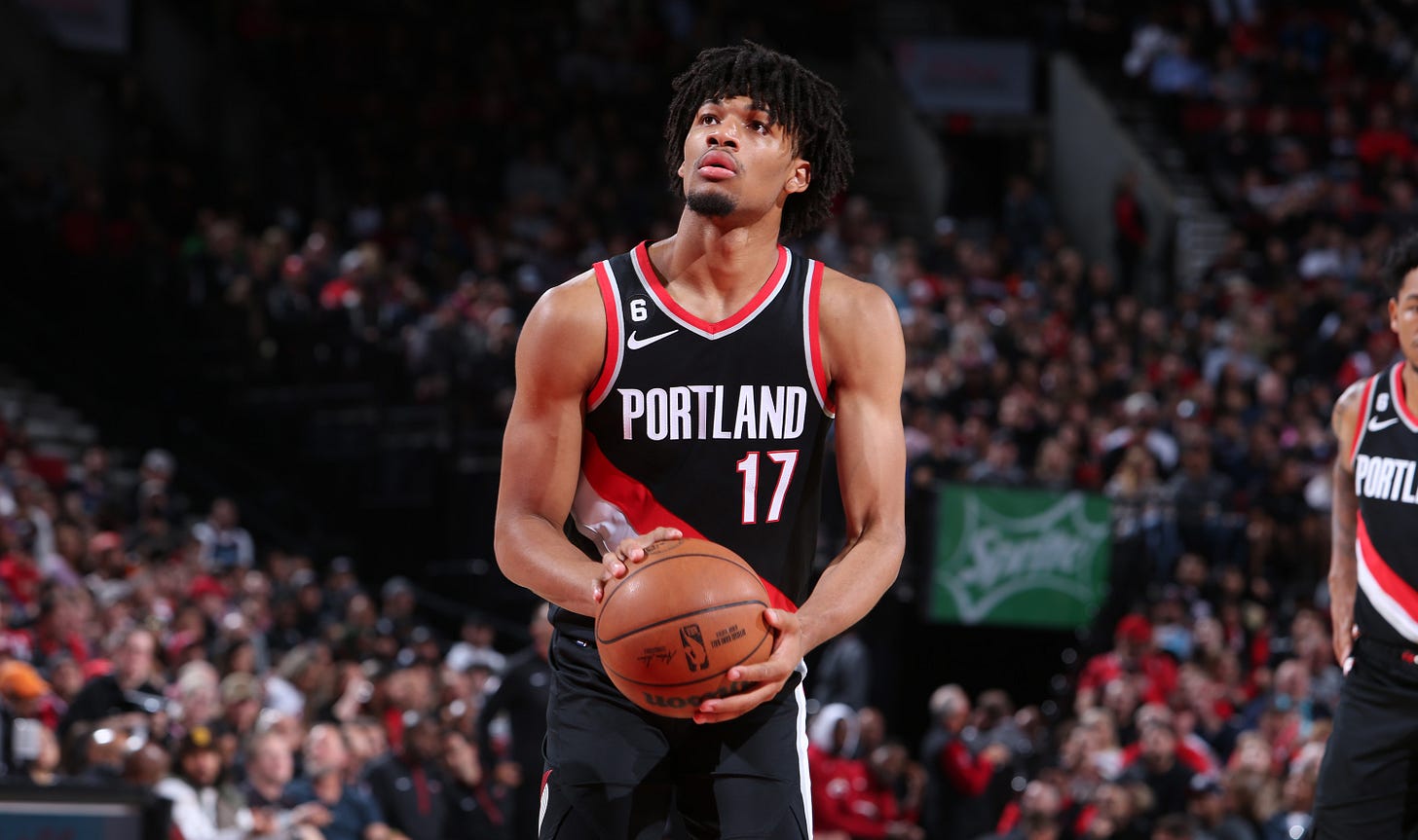Everything you need to know about the 2022-23 NBA season (a couple weeks in)
Playoff teams, rookie of the year, MVP projections
I’m a little late to the game here as we are already into the NBA season but I have wanted to put a basketball piece out for a while - so why not project out the 2022-23 season to start?
Background
I recently read two sports analytics books which I could not recommend more and which gave me a lot of the ideas used in this paper - The Midrange Theory, written by Seth Partnow, the former Director of Basketball Research for the Milwaukee Bucks and Hockey Abstract Presents… Stat Shot: The Ultimate Guide to Hockey Analytics by Rob Vollman, one of the foremost experts in hockey analytics and the Director of Pro Analytics for the Los Angeles Kings.
From The Midrange Theory I learned what some of the foremost NBA front office player valuation stats are and how they are computed - I’ll give a brief overview of regularized adjusted plus-minus (RAPM) and then use it as the main yardstick with which to evaluate NBA players.
While most of Stat Shot is focused on roster creation and constrained optimization in the salary cap era of the NHL, it also explains three crucial ideas which are necessary for this experiment: first, how to project the performance of prospects in the professional league from their performance at the amateur/college level, next, how to factor in multiple years of player data but weight the most recent data the highest (using Marcel the Monkey forecasting, borrowed from the MLB), and finally, how to adjust player value projections for age (also inspired by the MLB).
Using age-and-recency-adjusted RAPM stats, we will project out who the star veterans of the NBA season will be. Using draft age, NCAA conference strength, and college stats, we will project the top (drafted from NCAA) rookies for the season. Finally, combining the rookie projections and veteran projections will allow us to see who the best teams in the league will be this season. Since we are a couple weeks into the NBA season, we can also see how teams have performed out of the gate relative to these projections.
Disclaimer
I have not intentionally left out NBA rookies from other leagues beyond the NCAA (Italy, France, Serbia, etc.), the data was just a bit harder to wrangle and I didn’t want to let perfection get in the way of good enough. Maybe I’ll come back to them later in a future article.
Disclaimer 2
I make no predictions about usage rate for all the players in this paper. If a player is projected to be a star but doesn’t get the minutes, then that can have drastic impacts on their production and the team’s overall performance. RAPM is a rate based stat
RAPM primer
We can break RAPM down into its three components - regularized, adjusted and plus-minus. Plus-minus is pretty straightforward, it is simply how many points were scored by the player’s team minus points scored against that team, while that player was on the floor. It is a rudimentary stat which lacks opponent and teammate context. If a solid point guard is on the floor with a bunch of below-average players, his plus minus will probably be lower than a below-average point guard on a good team because the former point guard’s offense will be performing worse as a whole.
Adjusted plus-minus (APM) factors in teammate and opponent strength. To solve for APM, you calculate what each individual’s contribution to plus-minus was, relative to other players on the court at the time using a linear regression (great explanation here).
The one problem with using a linear regression there is that there is likely to be a lot of collinearity - starters tend to play with other starters, and so their APMs are correlated - which violates a key assumption for simple linear regression. This manifests in the data as a rising tide lifting all boats - starters on good offenses will always have good APMs, even if they aren’t the ones doing the scoring. This problem is solved by regularizing the plus-minus with a Ridge regression (as we did for NFL scores). Now we arrive at RAPM - which is a plus-minus stat that uses possession-based data to isolate individual player contributions and correct for collinearity amongst players who typically share the court.
Top NBA players by RAPM, 2021-22 season
There are also RAPM offensive and defensive components:
Offensive RAPM
Defensive RAPM
It seems like, according to RAPM, Jayson Tatum was the best player of last season. Nikola Jokic ended up winning the MVP award, however, which is not too egregious considering he was third in total RAPM. Darius Garland was a finalist for Most Improved Player (Ja Morant won), and Mikal Bridges was a finalist for Defensive Player of the Year (Marcus Smart).
So, who will be the best veteran players in 2022-23?
Veteran forecasting
To project veteran performance, we’ll be using previous NBA stats, weighting the most recent data the heaviest, and then using an age-factor to tweak these stats.
Career RAPM leaders, active players
This really speaks to the greatness of LeBron, CP3, Curry, and KD, as well as the rising stardom of Tatum, Embiid, and… Immanuel Quickley? While this list is topped by some all-time greats, many are past their primes, so when projecting future performance, we should weight recent performance more heavily.
sheeeeesh
Marcel forecasting
Marcel forecasting was invented by Tom Tango and used for projecting MLB player performance. Simply put, it uses a recent-stats weighted average where, in his case, the most recent season’s stats count fivefold, two years ago counts threefold, and three years ago counts onefold. In Stat Shot, Vollman swapped this out for a 4-2-1 weighted average, where each season is twice as important as the season that preceded it, which we’ll use here.
RAPM and Marcel projection, 2019-2022
Using the Marcel method to project RAPM for veterans, we can penalize players who had their best years behind them, while rewarding players who have been good recently. Players who have been good recently have a Marcel projection which is greater than their three year RAPM average (Tatum, Gobert, Embiid, Durant, Holiday, Jokic, Curry, Quickley). Players who had a down 2021 or 2020 season, relative to prior performance, have lower Marcel projections (Leonard, Antetokounmpo).
Correcting Marcel projections with veteran age factors
Playing basketball causes a lot of wear and tear on the body, and generally players get worse when they are past their athletic primes:
What’s wrong with that chart?
If you looked at this chart of average RAPM versus player age, it would seem like younger players in the league get better until they are about the age of twenty-eight, then stay about the same until the age of forty, and then fall of a cliff. What a long athletic prime that would be! In reality, this chart is skewed by survivorship bias. We don’t see the cliff in RAPM performance sooner because the only players who are still in the league after the age of thirty-two are the absolute best players for that age. Players who get significantly worse around that age don’t survive in the league long enough to contribute to that chart. Just look at how small the proportion of players over thirty-two has been:
In Stat Shot, Vollman borrows an idea from the MLB to correct this bias - instead of looking at average RAPM changes by age among the whole league, he forms two-year pairs of performance for each player, and averages out their individual age-related changes. For example, in this experiment, we would take the RAPMs of all players who played at age thirty five and age thirty six and then find the average change in RAPM amongst all of those players at those ages. Here’s what our chart looks like with that tweak:
With this tweak we solve for the veteran age factor, or how much we’d expect a player’s RAPM to change with each additional year of age. The age factor is greater than one from age twenty to about age thirty three - in these years, players are, on average, getting better at a declining rate. After thirty-three, however, players get worse at an increasing rate. Around then, the averages end up diverging from the line of best fit a lot, probably due to how few data points there are. We use the line of best fit to solve for our age factors instead, since it fills in the gaps from lack of old-player data:
Age-adjusted Marcel RAPM projections examples
Here are a few ways you can group the adjusted RAPM projections
Old and still kicking:
These players are past their primes but still should contribute positively to their teams in 2022-23.
Should probably hang it up (if they haven’t already)
Older players who actively detracted from their teams and would likely only be worse this year (if they’re on rosters).
Young stars
Kind of an arbitrary cutoff here for “young” but these are the top projected returning players under the age of 24. The Grizzlies (Ziaire Williams, Ja Morant, Jaren Jackson Jr.) have a really exciting young core which should terrorize the league for years to come.
Outlook isn’t great
We already established that young players get better. But these guys have a long climb to become mainstays in the league.
Projected veteran MVP candidates
There is a lot of uncertainty around Kawhi Leonard since he was out the entirety of last season (and is already injured this year), but he projects to be the league’s top superstar. The Bucks have a fearsome twosome in Antetokounpmo and Holiday which will push them into playoff contention. Also of note, while the top players forecasted for 2022-23 are almost the exact same players as in 2022, the list has shifted a bit with the younger players climbing and the older players falling.
Rookie forecasting
Here’s where we use a bit more voodoo
BPM primer + model plan
Since RAPM isn’t tracked in the NCAA, box plus-minus (BPM) was created to help NBA teams estimate college players’ values. It is simply the plus/minus for a college player per 100 possessions, not adjusted or regularized. To forecast rookie performance for former NCAA player draftees, we’ll need to create a formula to convert BPM to RAPM.
For this we’ll be solving for two constants - draft class age factor and conference quality to control for survivorship bias and strength of opponent, respectively. For the draft class age factor, this will be a factor which controls for a the opposite effect from what we had for veterans - the best NCAA players get drafted before they can have their sophomore, junior, or senior seasons. This age factor also captures how older NCAA players are more “NBA ready” on average - their NCAA BPM correlates more strongly with their rookie-year NBA RAPM. We’d thus expect this factor to be lower for younger players than for older players (while younger players eventually make up the ground with the higher veteran age factor).
Conference quality is what it sounds like - just a multiplier for BPM based on the NCAA conference the player was in. Some conferences have produced more NBA-ready players than others.
Top players by NCAA BPM, 2010-2022
It is probably no coincidence that the best NBA players on this list were all freshmen when they were drafted
How did the top NCAA prospects do as rookies?
While the freshman prospects ended up becoming the better NBA players, they were not superstars automatically. As expected, some of the better NBA rookies on this list were drafted as upperclassmen. The SEC has also produced some of the highest per-season BPM numbers, but fairly unimpressive NBA rookie numbers, so that could be conference quality in action.
Top RAPM rookie seasons by former NCAA players
The ACC (4) has the most players on this list, so it is probably one of the stronger conferences
Conference quality:
We take all the BPM, conference, and RAPM data to solve for conference quality factors. Here are the results for conferences with greater than fifteen players sent to the NBA in the past decade:
The ACC seems to be the most competitive NCAA conference and it has sent the most players to the NBA over the past decade, which makes sense. However, players coming out of the MWC, for example, don’t get a huge boost in their NBA projection.
Draft class age factor
We do something similar here as we did with conference quality, but using the player’s highest college class as the cross-panel instead:
While freshmen draftees perform the worst out of all classes on average (as rookies), they have the smallest age factor. This is probably because of a harder transition to the league as a freshman who is less developed versus a senior who has had elite NCAA Division 1 coaching for 4 years. This age factor, in tandem with the veteran age factor, tells us that while the transition to the NBA might be harder for a freshman than for a senior, younger players get better more rapidly and have longer primes, which, in turn, tends to make freshman draftees the better players when all is said and done, all else equal.
Top rookies for 2022-2023
We now use our college BPM stats for 2022 NCAA draftees, along with their ages and conferences to solve for expected rookie RAPM:
Well, Chet Holmgren is out for the season so this list already has its issues. Holmgren and the rest of the top five spots are all massive outliers. I wouldn’t expect an 8.83 RAPM out of Tari Eason as a rookie (or anyone), but the projections definitely point towards him and his teammate Jabari Smith being impact players immediately for the Rockets.
Rookies who might take a few years to pan out
There are some interesting draft choices here by the Pistons and Pacers (two apiece on this list). These players are all still young and will rapidly get better, but according to our formula these players probably won’t make their teams better immediately. They will be more of a multi-year investment. So far though, Jaden Ivey has definitely been good.
Putting it all together - NBA team projections
By combining our rookie forecasts with our veteran forecasts, we can look at total team RAPM for 2022-23
NBA playoff top contenders
This projection does not include any injuries/suspensions which have happened thus far in the 2022-23 season (Kawhi and Kyrie come to mind), and does not include any rookies from leagues other than the NCAA.
Likely non-contenders
At least Dame didn’t run from the grind
Teams with the best (immediate) drafts:
The Grizzlies had an excellent draft to add to their already-elite young core. Whether the Thunder’s draft ends up being good or not depends entirely on how Chet turns out when he recovers, and the Rockets could have had one of the best drafts in a while, with three first round picks.
Teams with best returning players
The Suns don’t have any rookies on the roster this year, believe it or not. They’ll still be good.
Early results from the NBA
11 games is hardly enough data to verify if these predictions were correct, but we can regress projected RAPM against current conference standing to see if there are any outliers/potential mistakes made:
There is a negative correlation - generally the worst-projected teams have been the worst in their conferences thus far, with one notable outlier - the Portland Trail Blazers:
The only explanations I can think of here are that firstly, Portland has gotten to play a lot of losers: the Heat (twice), Hornets, Lakers, and Rockets. Additionally, I didn’t have a RAPM projection for Shaedon Sharpe, who didn’t play in the NCAA, he simply went to Kentucky for a year, played in practice, and then was drafted. The Sharpe omission could lead to the Trail Blazers overperforming their projections this season, but I still think they’ll come back down to Earth a bit over a larger sample of games.
If you’ve made it this far, thanks for reading! This was probably the highest-effort blog to date from someone who doesn’t watch a lot of basketball. This definitely has made me a lot more interested in the game, however, and I hope to write more basketball pieces soon.

